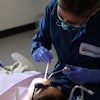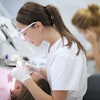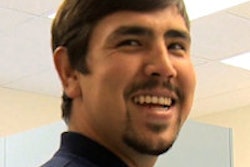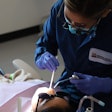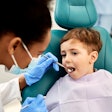
Dental health aide therapists (DHATs) may improve access to care for oral health where access to dentists is limited, according to a new study by researchers at RTI International and the School of Dentistry at the University of North Carolina at Chapel Hill (American Journal of Public Health, October 1, 2011, Vol. 101:10, pp. 1836-1840).
Dental therapists, under the general supervision of dentists at regional offices, may perform cleanings, dental restorations, and uncomplicated extractions.
"There is an acute shortage of dentists willing to practice in small, remote villages in Alaska." said Scott Wetterhall, MD, MPH, the senior program director of Health Security and Systems Research at RTI and the study's principal investigator. "Relying on a traditional itinerant care approach leaves people with limited access to emergency and preventive treatment, allows disease and associated pain to worsen, and fosters expectations that dental care should be sought only when a person is in pain."
In October 2010, RTI published the first major independent evaluation of Alaskan DHATs. The therapists were observed performing sealant placement, composite and amalgam preparations, stainless steel crown placement, and oral health instruction. After surveying 400 residents in five communities where the DHATs were working, RTI concluded that the therapists are offering safe and competent care to residents of remote and underserved native communities.
“The DHAT model ... was never intended to replace the services of licensed dentists.”
— Barri Burrus, PhD, RTI International
For this latest study, RTI surveyed 62 adults and more than 200 parents of children age 6 to 17 who had been treated during the previous year by a DHAT. The researchers asked them questions about their experiences and studied their clinical records.
The patients surveyed reported that they were very satisfied with the care they received from DHATs, and their satisfaction with this care did not differ from satisfaction with the care provided by other dental practitioners.
Village residents said that having a village-based DHAT improved access for dental emergencies, RTI noted. The DHATs also educated village residents, particularly children, about the importance of preventive dental care.
"Our research showed that using a DHAT could be an important component of a broader program to address the crisis-of-care challenge posed by a growing shortage of dentists, particularly for sparsely populated areas," said study co-author Barri Burrus, PhD, a senior community health psychologist at RTI.
According to the research, the DHAT model minimizes impediments such as travel requirements and weather, and makes access to emergency and regularly scheduled restorative and preventive care a viable option.
"The DHAT model does not and was never intended to replace the services of licensed dentists," Burrus said. "The model's design specifies that dental health aide therapists operate under supervision of a licensed dentist, and even then allows only a relatively limited scope of practice. The licensed dentist must continue to play a key role in performing more complex and specialized procedures."
The DHAT model is just one piece of the solution for improving dental care in rural and underserved groups, the researchers noted.
"Other strategies, such as decreasing sugar consumption and fluoridating water safely, must also be encouraged," Burrus said.

